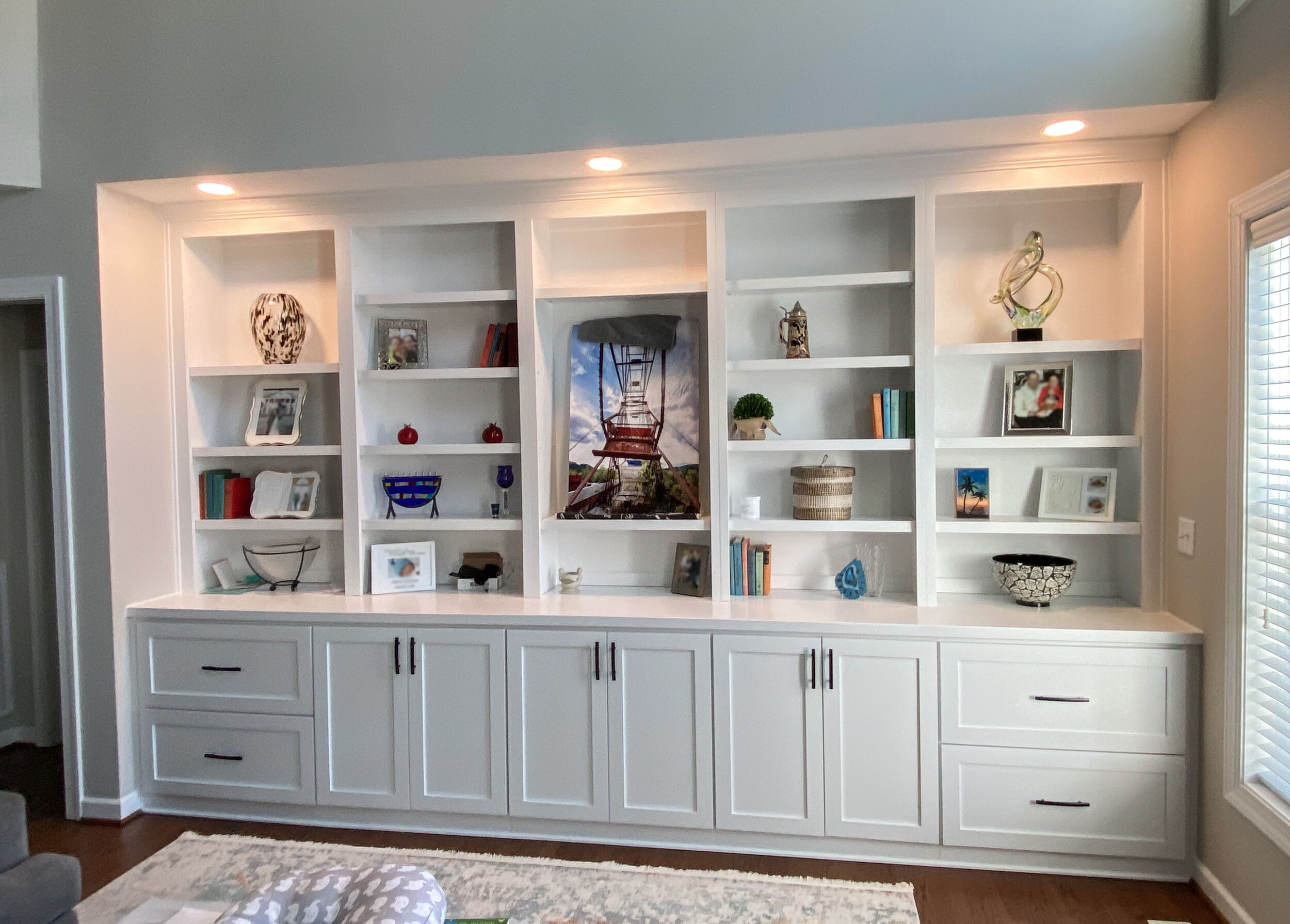Design Considerations for Built-In Cabinets in a Painting Room: Painting Built In Cabinets
.jpg)
Creating a well-designed painting room involves careful consideration of storage solutions. Built-in cabinets offer a space-saving and customized approach to organizing art supplies and materials, enhancing both workflow and the overall aesthetic of the studio. This section details key design aspects for incorporating built-in cabinets into your painting space.
Painting Room Layout and Cabinet Dimensions
A well-planned painting room layout maximizes space and workflow. Consider a room approximately 12ft x 14ft. One wall, ideally the longest (14ft), can be dedicated to built-in cabinetry. This wall should house a combination of tall cabinets for storing larger items like canvases and easels, and shorter cabinets for smaller supplies. Opposite this wall, a large, well-lit work surface (approximately 6ft x 3ft) should be positioned. Additional storage, such as open shelving or a mobile cart, could be placed nearby for frequently used items.
| Cabinet Type | Dimensions (W x D x H) | Materials | Functionality |
|---|---|---|---|
| Tall Cabinet (x2) | 24″ x 18″ x 72″ | Solid wood (maple or birch) | Canvas storage, large easels |
| Medium Cabinet (x3) | 36″ x 18″ x 36″ | Solid wood (maple or birch) | Paint storage (divided shelves), brushes, palettes |
| Short Cabinet (x2) | 24″ x 18″ x 24″ | Solid wood (maple or birch) | Smaller supplies, mediums, solvents (with safety features) |
| Drawer Unit (x1) | 48″ x 18″ x 24″ | Solid wood (maple or birch) | Drawers for smaller items like pencils, charcoal, etc. |
Optimal Placement of Built-In Cabinets for Workflow Efficiency, Painting built in cabinets
The placement of built-in cabinets significantly impacts workflow. The most efficient arrangement positions frequently accessed items within easy reach. For example, paint and brushes should be stored in easily accessible cabinets near the work surface. Less frequently used items, such as large canvases or extra supplies, can be placed in taller cabinets higher up or in a less central location. Consider incorporating pull-out drawers and shelves for optimal accessibility to all stored items. This reduces bending and reaching, improving overall ergonomics and efficiency.
Advantages and Disadvantages of Cabinet Materials
Several materials are suitable for painting room cabinets. Each has its own set of advantages and disadvantages.
Wood (e.g., maple, birch, oak): Offers durability, aesthetic appeal, and can be easily customized. However, it is susceptible to damage from solvents and moisture, requiring regular sealing and maintenance.
Metal (e.g., steel, aluminum): Highly durable and resistant to solvents and moisture. However, it can be more expensive and less aesthetically pleasing than wood, potentially requiring additional finishing or paint.
Plastic (e.g., melamine, PVC): Affordable and easy to clean. However, it may not be as durable as wood or metal and might lack the aesthetic appeal of wood.
Designing Custom Built-In Cabinets: A Step-by-Step Guide
Designing custom built-in cabinets involves a systematic approach:
1. Assess Needs: Determine the types and quantities of art supplies to be stored. Consider future needs as well.
2. Space Planning: Measure the available wall space and plan the cabinet layout to maximize space and workflow.
3. Cabinet Design: Sketch the cabinet design, specifying dimensions, materials, and features (e.g., shelves, drawers, doors).
4. Ventilation: Incorporate ventilation to prevent the buildup of fumes from solvents and paints. This can be achieved through small vents or a dedicated ventilation system.
5. Lighting: Adequate lighting within the cabinets is essential for locating supplies. Consider installing LED strip lights inside cabinets for better visibility.
6. Material Selection: Choose materials based on durability, aesthetics, and budget.
7. Installation: Engage a qualified carpenter or cabinet maker for professional installation. Ensure proper sealing and finishing of the cabinets.
